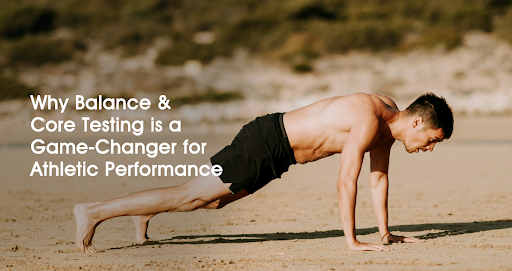
- info@fitindiatrust.org
- +91-7999567519

Types of Endurance Training: Which One Is Right for Your Fitness Goals
Introduction
Endurance is not just about completing a marathon; in fact, it reflects the body being pushed beyond its limits until we begin to develop resilience and discover the stamina we actually have. The secret - choose the best type of endurance exercise for your goals. Endurance training goes beyond physical fitness; it builds mental toughness, discipline, and consistency that carry into every part of life. The ability to keep going when things get tough - on the track, in the gym, or in daily challenges - comes from structured training that strengthens both body and mind.
Endurance Training and Why It Matters
Endurance training is an important part of training to enhance the body's ability to continue working physically for an extended period of time. It contributes to cardiovascular health and builds stamina with total body fitness. Endurance training increases your aerobic and anaerobic capacities, which helps you to perform harder and longer - whether you are running a race or lifting weights.
It can help improve your mental resilience so that you can push through fatigue to perform at your peak. Endurance training is excellent for improving athletic performance, losing weight, and maintaining general health. If you are working toward fitness coach certification, understanding how to apply different endurance techniques is important to help clients get lasting results.
Understanding Its Types
Long-Distance Endurance Training
Aerobic or long-distance training - this is among the common types of endurance training, which involves sustained and steady exercise carried out at a moderate rate for a long time. Some excellent aerobic exercise activities can include running, biking, swimming, and more.
How it works:
This type of training increases the number of mitochondria in your cells, which allows your muscles to utilize oxygen more efficiently.
Who is it for?
It works for marathoners, triathletes, and long-distance cyclists. It also has general benefits for anyone who wants to improve their fitness while steadily burning calories.
Benefits:
-
Better cardiovascular health
-
Enhanced fat-burning ability
-
Improved aerobic capacity
-
Stronger mental focus
High-Intensity Interval Training
HIIT is one of the most popular types of endurance training because it produces results quickly and in a short amount of time. It alternates between bursts at maximum effort and short recovery periods lasting typically 20-30 minutes.
How it works: Sprint for 30 seconds, walk for 30 seconds, then repeat. This method improves the anaerobic and aerobic systems.
Who is it for? It is great for busy people or athletes who want to improve their performance and stamina without long workouts.
Benefits:
-
Burns a lot of calories quickly
-
Improves cardiovascular and muscular endurance
-
Increases metabolism and fat loss
-
Can be done with minimal equipment
For anyone looking to design personalized workout programs or guide others for endurance-based training methods, mastering fitness coaching involves understanding important techniques and knowing the right way to use them for maximum impact.
Strength-Endurance Training
Strength-endurance workouts combine resistance training with high repetitions to increase muscular endurance and strength.
How it works: Perform moderate-weight exercises (50-70%) for high repetitions (15-30) for multiple sets. Over time, your muscles will adapt to resist fatigue.
Who is it for? Any athletes who participate in rowing, combat sports, or CrossFit. It is also beneficial for fitness enthusiasts and individuals who enjoy strength training but do not want to gain muscle mass.
Benefits:
-
Increases muscular endurance
-
Improves the endurance ratio
-
Reduces injury
-
Improves endurance performance
Fartlek Training (Speed Play)
Fartlek is Swedish for "speed play" and is an unstructured, fun type of endurance exercise that incorporates continuous and interval workouts.
How it works:
You might jog steadily, then sprint to a landmark, slow down again, and repeat randomly.
Who is it for?
This is among the types of endurance training perfect for runners, cyclists, and athletes who compete in team sports and need flexible speed and endurance.
Benefits:
-
Improves both speed and stamina
-
Keeps workouts interesting
-
Improves aerobic and anaerobic capacity
Tempo Training (Threshold Training)
Tempo training, often referred to as threshold training, allows you to sustain faster speeds for longer to work just beneath (or above) your lactate threshold.
How it works:
For 20-40 minutes, maintain a pace that is comfortably fast, such as a pace just below your 10K race speed.
Who is it for?
Best for competitive athletes aiming to improve pacing, speed, and race performance.
Benefits:
-
Improves speed and endurance
-
Delays muscle fatigue
-
Strengthens focus and pacing strategies
Circuit Training
Circuit training is one of the most versatile types of endurance training, combining aerobic and strength exercises in a sequence with minimal rest.
How it works:
The session might include squats, push-ups, sit-ups, and jumping jacks repeated for several rounds.
Who is it for? This is among the types of endurance training that is great for those who are short on time and want to get a good full-body exercise.
Benefits:
-
Increases muscular endurance with cardiovascular
-
Effective and time-saving
-
Builds strength and stamina together
Conclusion
Experimenting with different types of endurance training can help you match your workouts to your goals. Long-distance training and tempo sessions are great for endurance events. HIIT and Circuit sessions are ideal for weight loss, time efficiency, and speed. Fartlek is fun and adds variety, while strength endurance prepares muscles for long-term effort.
Combining multiple endurance exercises into a weekly training routine is great for the best results. This method challenges your energy systems and prevents boredom. It also keeps you progressing steadily.
Endurance training is about becoming stronger and healthier. So, unlock your fitness potential by choosing the right methods and being consistent.
FAQs
What is the best kind of endurance training for losing weight?
High-Intensity Interval Training and circuit training are effective for weight loss because of the high caloric expenditure and metabolic responses.
Can I combine different types of endurance training?
Yes, using multiple types of endurance training can enhance overall fitness, decrease boredom, work many energy systems, and create more balance in performance.
Is endurance training good for beginners?
Yes. Beginners can use low-intensity long-duration workouts or some light circuit training, and progress the intensity and duration over time as they feel appropriate.


.png)
